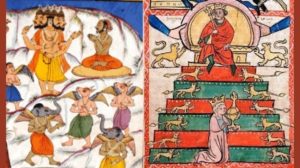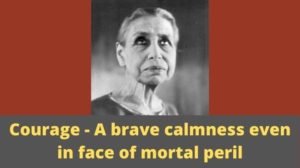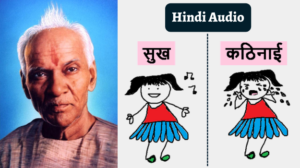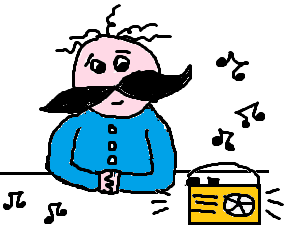What is Courage? In this 6 Part Series on Courage, we shall visit Mother Mirra’s teachings regarding the 3 types of courage that are found in the world. Progressing from the lowest to the highest, the first kind of courage, is the courage to defend and protect oneself. The second is the courage to help near and dear ones. And finally the third and the highest form of courage, is the moral courage to stand up for the cause of truth.
Now in order to deepen our understanding of these various types of courage, in this article, we shall visit stories written by Mother Mirra that help highlight the first 2 kinds of courage. Subsequently in Part 2 of our Series on Courage we shall visit the story of Vibhishan, the brother of the demon king Ravana to understand the third and the highest form of courage, which is the moral courage to speak truth before power.
These teachings which deepen our understanding of “What is Courage”, have been taken from Mother Mirra’s book Words of Long Ago (Volume 2 of Mother’s Works).
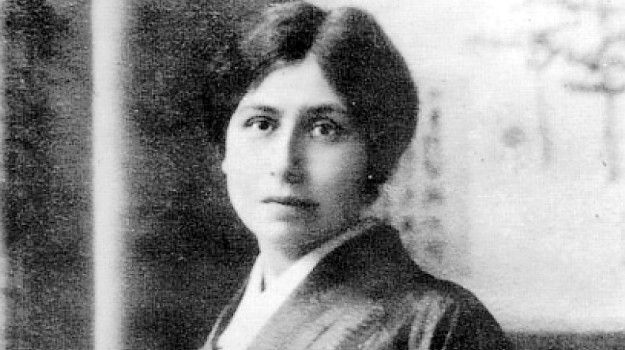
– Mother Mirra, Sri Aurobindo Ashram
1. Types of Courage – The Courage to Protect Oneself
YOU FALL into the water. You are not daunted by the great watery mass. You make good use of your arms and legs, grateful to the teacher who taught you how to swim. You grapple with the waves and you escape. You have been brave.
You are asleep. “Fire!” The cry of alarm has awakened you. You leap from your bed and see the red glare of the blaze. You are not stricken with mortal fear. You run through the smoke, the sparks, the flames, to safety. This is courage.
Some time ago I visited an infant school in England. The little school-children were between three and seven years old. There were both boys and girls, who were busy knitting, drawing, listening to stories, singing. The teacher told me, “We are going to try the fire-alarm. Of course there is no fire, but they have been taught to get up and go out promptly at the alarm-signal.”
He blew his whistle. Instantly the children left their books, pencils and knitting-needles, and stood up. On a second signal they filed out into the open air. In a few moments the classroom was empty. These little children had learned to face the danger of fire and to be brave.
For whose sake did you swim? For your own.
For whose sake did you run through the flames? For your own.
For whose sake would the children resist the fear of fire?
For their own.
The courage shown in each case was for the sake of self. Was this wrong? Certainly not. It is right to take care of your life and to defend it bravely. But there is a greater courage, the courage which is shown for the sake of others.
2. Types of Courage – The Courage to Help Others
Let me tell you the story of Madhava as it was recorded by Bhavabhuti (an 8th century playwriter and poet).
He is kneeling outside a temple and hears a cry of distress. He finds a way to enter and looks into the sanctuary of the goddess Chamunda. A victim is about to be slain in honour of this terrible goddess.
It is poor Malati. The girl has been carried away in her sleep. She is all alone with the priest and priestess, and the priest raises his knife just as Malati is thinking of Madhava whom she loves:
O Madhava! Lord of my heart,
Oh, may I after death live in thy memory.
They do not die whom love embalms in long and fond remembrance.
With a shout, brave Madhava leaps into the chamber of sacrifice and engages the priest in mortal combat. Malati is saved. For whom did Madhava show courage? Was he fighting for himself? Yes – but that was not the only reason for his courage. He was fighting also for the sake of another. He had heard a cry of distress and it had touched the brave heart in his breast.
If you give it some thought, you will recall having seen similar deeds. You have surely seen a man, woman or child helped by another human being who came running in response to the cry of alarm.
You must also have read in the newspapers or in history about similar acts of bravery. You have heard about firemen who rescue people from blazing houses; of miners who go down into deep shafts to bring out their companions imperiled by flood, fire or poisonous gas; of men who venture into houses shaken by earthquake and who in spite of the danger from crumbling walls, pick up and carry out the helpless people who would otherwise die beneath the ruins; and of citizens who for the sake of their town or their country confront the enemy and undergo hunger, thirst, wounds or death.
So we have seen what is the courage to help oneself and what is the courage to help others. In Part 2 of this Courage series, we shall visit the third and the highest form of courage, which is the moral courage to stand up and expose the hypocrisy and injustice of the powerful and the mighty. This type of moral courage has been beautifully highlighted by Mother Mirra, through the story of Vibhishan and demon Ravana, in the Ramayana.
 PART 2: Speaking Truth to Power – How Vibhishan Risked His Life to Stand Up to the Mighty Ravana – A beautiful story from the Ramayana as retold by Mother Mirra.
PART 2: Speaking Truth to Power – How Vibhishan Risked His Life to Stand Up to the Mighty Ravana – A beautiful story from the Ramayana as retold by Mother Mirra.



